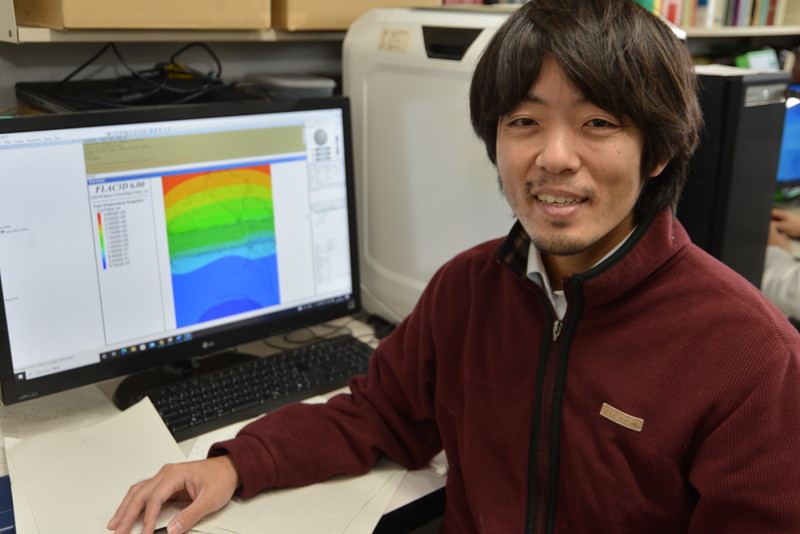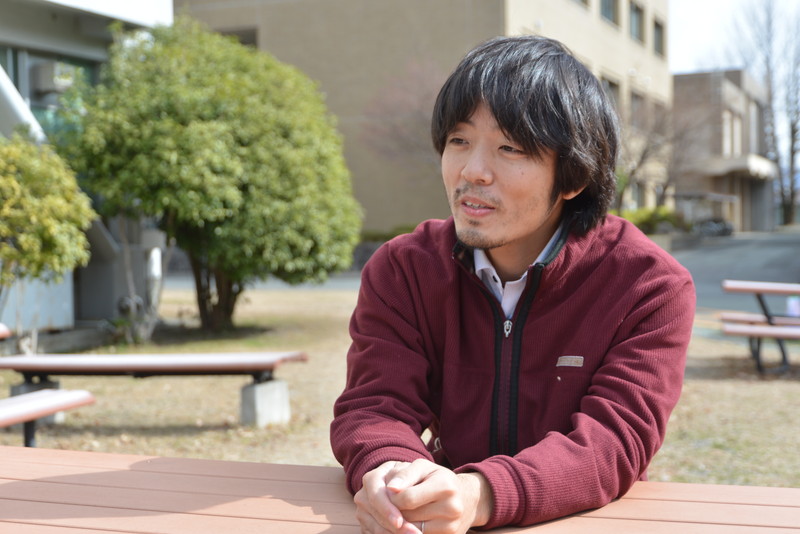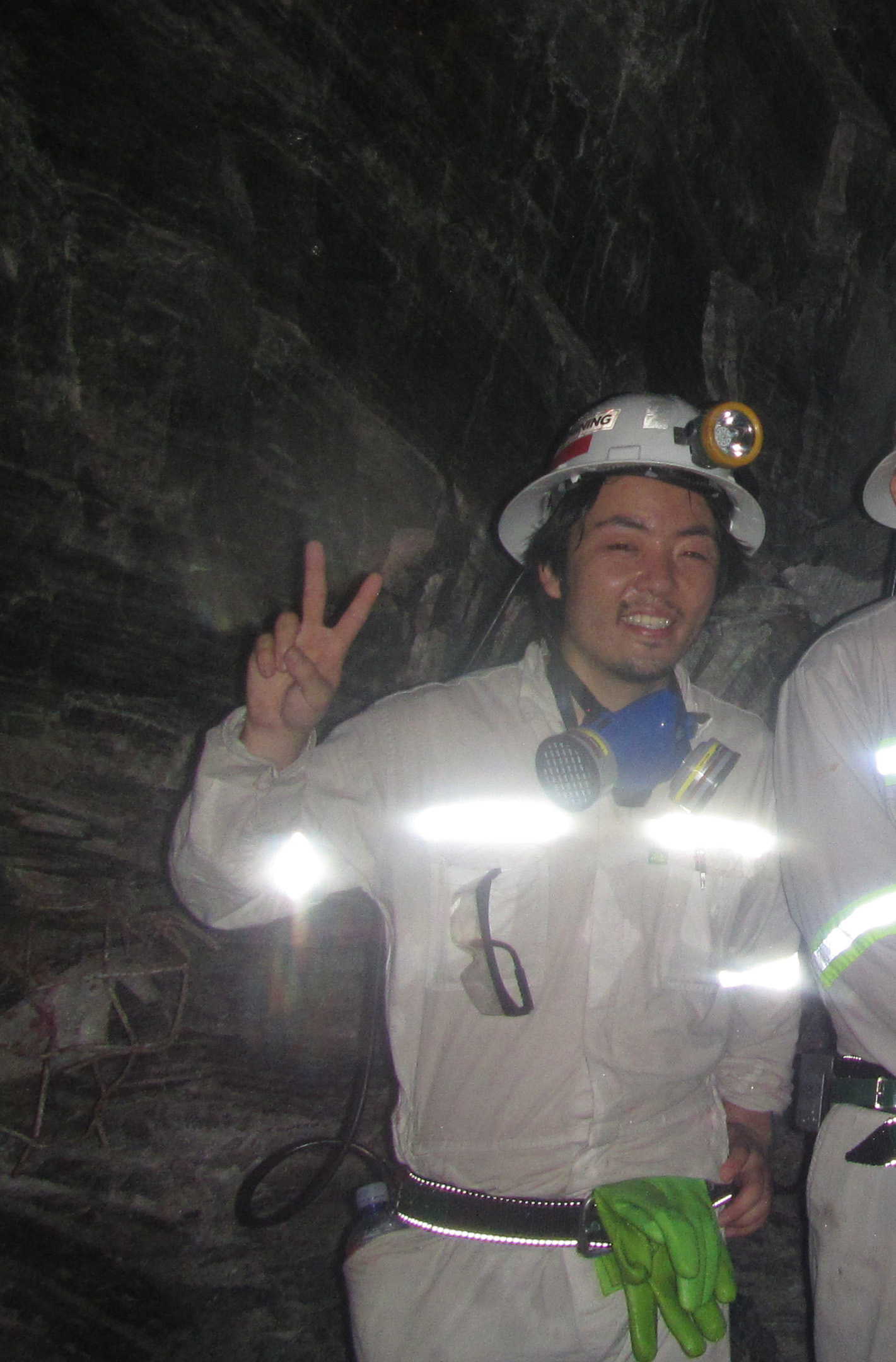NEWS
IROAST Researchers - Assoc. Prof. Atsushi Sainoki
English Japanese
Accurately understanding bedrock deformation and movement for safe and sustainable mine and geothermal development

Assoc. Prof. Atsushi SAINOKI
IROAST International Joint Research Faculty Member
Faculty of Advanced Science and Technology
(Period at IROAST: from January 2017 to March 2021)
Understanding rock mass behaviour at great depths is indispensable for safe and sustainable mine and geothermal developments in deep underground. In the field of research called rock mechanics, researchers conduct simulations of rock mass stress, whereby investigating earthquake occurrence and studying the mechanism of these events. Associate Professor Atsushi Sainoki is aiming to apply this research to the field of resource development.
■ Enabling safe resource development indispensable for our way of life
Q: What kind of research are you conducting?
Sainoki: My research is related to resource development. My research is to enable safe and efficient development of underground mines, open-cut mines, and geothermal development. The research is called natural resource and energy development based on rock mechanics because it mainly deals with rock mass, which is related to all the mines and geothermal developments. The purpose of this research is to stabilize the rock mass to ensure the safety of the personnel working in the mines, and to enable sustainable resource development at significant depths.
Specifically, first, what is needed is an accurate simulation of the stresses acting on the rock mass in deep underground. Considerably large stresses act on the rock mass at great depths, and moreover, the force varies from place to place even at the same depth. If underground openings are excavated close to locations with stress anomalies, it can cause massive deformation of the rock mass and may even trigger earthquakes. Accurate simulations of the stresses acting upon the rock mass enables the estimation of deformation and the risk for earthquakes. We are also estimating the scale of possible earthquakes based on numerical simulations.
This research elucidates the process from failure of rock mass to earthquake occurrence to predict the magnitude of earthquakes more accurately.
Q: Do earthquakes also occur in geothermal development?
Sainoki: Geothermal development extracts a mixture of steam and hot water from great depths, which can trigger micro-vibrations. This can lead to anxiety among nearby residents, so my research investigates how to minimize the occurrence of micro-vibrations as much as possible. Or, conversely, the research also investigates how the micro-vibrations can be utilized to characterize the non-visible parts of the rock mass at great depths.
I am also researching underground carbon dioxide storage technology as research related to “Science and technology to build a well-being society,” which is prioritized by IROAST. The research is on storage of carbon dioxide underground using microorganisms, so I am conducting this research in collaboration with a civil engineering professor knowledgeable on microorganisms.
Q: Why are you conducting this research?
Sainoki: I have always loved excavators, ever since I was very young. Then, in the last year of high school, when it was time to decide my future studies, I considered space studies, but in the end I wanted a job where I could operate heavy machinery.
So, that’s why I became interested in mining, and I went to Hokkaido University, where I could study mineral resource development. When I was allocated to a laboratory in the third year of my undergraduate degree, the laboratory conducted research on numerical simulations of open-cut mines, and I was really excited by the research. I went on to get a master’s degree, and thought North America would be my best bet for working in a large mining company, so I studied abroad at McGill University in Montreal, Canada. While studying for my doctorate I realized I enjoyed research and writing papers. So, after completing my doctorate, I stayed on at McGill University for two years as a postdoctoral researcher. When my contract ended, I heard about IROAST, applied, and decided to come to Kumamoto.

■ Research is supported with abundant research funds, and experienced technical staff with a wealth of knowledge
Q: What is appealing about IROAST?
Sainoki: The most significant aspect is the generous research funds, which are provided each year irrespective of your research results. This is particularly helpful for long-term research that does not produce immediate results. I am finally starting to see the results of research using experimental equipment and numerical simulation software I was able to develop with the research funds provided by IROAST.
There is also substantial support from the administration staff. IROAST researchers cannot teach students, so we are all alone while in the laboratory. Being able to go to the office and talk with the staff about various things is a great source of mental support.
Q: What have you achieved because of IROAST?
Sainoki: I have strengthened my overseas network. I already knew a large number of researchers overseas. During my time at IROAST I visited these acquaintances, travelling to Australia, North America, and China, and was able to build on my research network. I am currently with the Faculty of Engineering and I must also teach students, so it is difficult to make time to travel overseas. IROAST gives time to young researchers to immerse themselves in their studies, which allowed me to freely travel overseas to visit fellow researchers. I am very grateful to have had that opportunity.

Q: How do you find the research environment of Kumamoto University as a whole?
Sainoki:I have recently been conducting experiments using X-ray CT, and I found both the facilities and the support from technicians to be substantial. Kumamoto University technicians have a wealth of knowledge and experience. They have in-depth discussions with us researchers and provide support to move the experiment in a better direction, which is a great help.
Q: What is your message to young researchers?
Sainoki: Japanese people are hardworking, and there are many researchers who are in the laboratory from dawn until dusk. In Canada, before coming to Kumamoto University, I found that my fellow researchers valued their own time. I too spent half my life in research and the other half riding my road bike. Inspiration is important for research. Inspiration tends to come when you’re spending time away from your research, enjoying your hobbies or relaxing. So, I would advise people starting out on their research path to make the most of their time off.
Related links
- IROAST Staff

